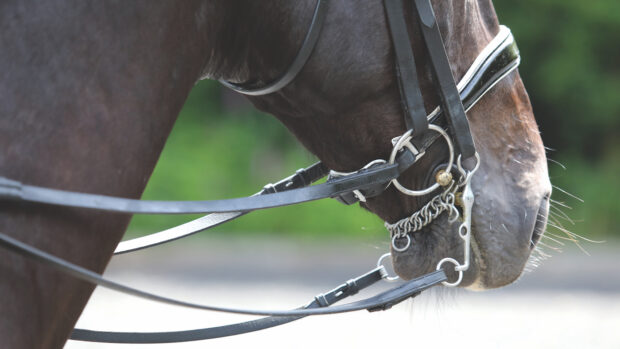Bitless bridles are normally used to keep a horse with a sore mouth in work while the mouth heals, but they are also useful if an unsympathetic rider has made a horse fussy or insensitive in its mouth.
Commonly known as hackamores, they can be used in all disciplines except dressage and showing, and are available in three main designs.
- The Scawbrig: This looks a bit like a drop noseband with reins [pictured above right]. It works by applying pressure to the front and back of the nose
- The English hackamore: Also known as the Blairs pattern, this bridle has a padded noseband with metal cheeks. It uses pressure on the nose, jaw and poll but with limited leverage
- The German hackamore: Long metal behind-the-lever shanks and a highly padded noseband make this design easy torecognise. This offers more leverage than other styles and can be adjusted by changing the ring the cheek pieces are attached to. It can have a leather strap or a chain behind the jaw.
A noseband on a bitless bridle should be comfortably tight; as a rough guide it should act when the lever arms turn to a 45-degree angle. It should sit below the horse’s cheekbones but high enough so it does not interfere with the horse’s breathing.
Barrett Watson, a popular trainer based in Suffolk, who also competes in eventing and show jumping, claims you can do everything in a bitless bridle that you can with a bit, including riding cross-country and schooling on the flat.
Barrett’s rules for “goingbitless”
- Get help from someone who knows how to fit one correctly and can advise on special riding techniques
- If the amount of leverage can be varied, start on the mildest setting
- Start off in a safe, enclosed area




